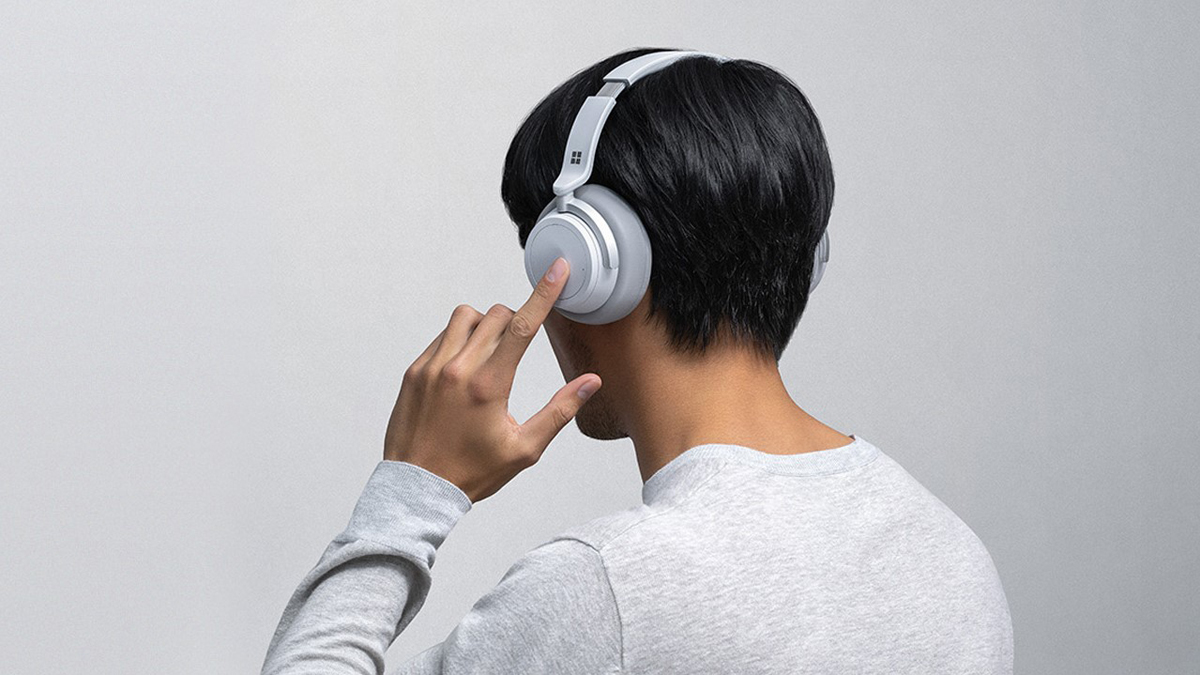Is your love of music damaging your hearing? An audiologist tells you what you can do about it
Musicians and music lovers are at greater risk of suffering the effects of tinnitus and noise-induced hearing loss, but it doesn’t have to be that way, says Brian Taylor

In March, Apple announced the results of a study it conducted, in conjunction with the University of Michigan School of Public Health, about hearing-related issues.
Participants agreed to share information generated by their Apple Watch and iPhone to gauge their exposure to dangerous sound levels. Data from the study is being shared with the World Health Organization’s (WHO) Make Listening Safe initiative.
The fact that Apple, a company whose mobile devices, earbuds and headphones have spawned ubiquitous personal listening experiences, would invest in such important research indicates that there’s a challenge that needs addressing. Namely, the long-term effects of loud music and entertainment on people’s hearing.

5 essential tips to beat ear fatigue and protect your hearing
Among the report’s insights, according to Apple, is that “average weekly headphone exposure for one in 10 participants is higher than the WHO recommended limit.” Furthermore, “according to data collected using the study’s hearing tests, 20 percent of participants have hearing loss when compared to WHO standards, and 10 percent have hearing loss that is consistent with noise exposure.”
So many of us love music. We love playing it, creating it and listening to it. And we’ve basked in a golden age of technology that has allowed us to experience music in new, richer ways, some of which arguably expose us to sound levels that could have long-term effects on our hearing.
The fact is, the better the listening device - headphones, speakers - the greater the temptation to turn up the volume and enjoy clear, booming, distortion-free music. And although most of us aren’t enjoying live music now, there’s hope we will again soon, and there is a significant body of research spelling out the harmful effects of prolonged exposure to loud music at concerts and in clubs.
But the more we understand about hearing and how loud music can impact it, the more we can take steps to protect ourselves over the long term.
Get the MusicRadar Newsletter
Want all the hottest music and gear news, reviews, deals, features and more, direct to your inbox? Sign up here.
How to minimise noise-induced hearing loss
Imagine being the musician son of an audiologist, a healthcare professional who identifies, assesses and manages hearing, balance, tinnitus, and other auditory disorders.
It’s like if a fry cook’s dad were a nutritionist. Basically, you grow up understanding some of the potential pitfalls of your profession. You may even share what you learn with your peers.

My son recently graduated from college and embarked on a career in the music industry. While he safely rides out the pandemic, he’s found a niche producing beats for inclusion in others’ work.
Headphones are a way of life for him. So is an app that measures sound pressure levels. He has several friends who DJ and have complained that the noise level in clubs harmed their ears. They now rave about musician-class ear protection and the positive effect it’s had.
If I, as that fatherly audiologist, could sit around a table with musicians in preparation for the time when we’re all enjoying music to its fullest, I’d offer the following advice for protecting themselves:
Understand the reality.
Musicians, producers, DJs, music-lovers; because of their passion, they’re at an elevated risk of noise-induced hearing loss and tinnitus - that ringing in the ears that isn’t really the same as hearing loss, but can be a sign of things to come.
It’s not just about rock music and aging rockers, either. Orchestra musicians, such as violinists and flutists, have been shown to develop ‘blind side’ hearing loss in one ear or the other depending on how they hold their instruments or where they sit. And research has shown that student musicians, ages 18 to 25, are more susceptible to noise-induced hearing loss.
That fact is, no matter who you are, prolonged exposure to loud music - anything 85 decibels and higher - can affect your hearing.
Understand what’s at stake.
Tinnitus is among the most common effects of loud music on hearing, and often, it can lead to hearing loss over time. But it’s not the only way loud music affects hearing, and many other symptoms can linger for a lifetime.
That fact is, no matter who you are, prolonged exposure to loud music - anything 85 decibels and higher - can affect your hearing.
Noise-induced hearing loss can eventually lead to discomfort or pain. In some cases, musicians could suffer an ailment called hyperacusis, which is characterised by abnormal sensitivity to sounds that others may not find overly loud.
Moreover, hearing loss can cause fatigue and make it difficult for you to concentrate, because your cognitive facilities work harder to make out speech, everyday sounds, or even the nuances of a musical score. When that happens, some people withdraw from social situations, choosing to stay home rather than suffer the exhaustion of trying to focus on conversations and everyday interaction.
Be aware of noise levels.
With this understanding, you’re taking an active interest in protecting your hearing. There may be no easier way, in this age of apps and personal technology, for you to gauge the noise you’re exposed to than running an app on your smartphone.
The various app stores include free or inexpensive, highly-rated sound level meter apps that detect and measure harmful noise. Once that meter goes above 85 decibels and stays there for an hour or more, you risk hearing damage. The louder the music, the less time it’s safe.
Wear hearing protection.
Forget about the foam plugs - these days there are many good, discreet, musician-grade earplugs that effectively filter out damaging noise while allowing clear, detailed sound to enter the ear. Some are custom fitted to the wearer, but others can be had for $20 or less and work well to protect your hearing while you’re experiencing the music. Long-time musicians know these solutions exist; it’s just a matter of using them.
Test your hearing yourself.
If you know you’ve been exposed to prolonged, unsafe noise levels, it’s a good idea to check your hearing and establish a baseline so you’ll know, over time, how your hearing may or may not be changing.
Of course, an audiologist can test your hearing for you, but there are also apps that can help. Recently, researchers reviewed more than 40 apps designed to screen for hearing loss, producing detailed audiograms and/or qualitative descriptors (‘abnormal hearing,’ etc.) that could help a doctor or hearing care professional further diagnose your situation. Many of these apps are free, so there’s no significant downside to giving them a try.
Treat that tinnitus.
If it becomes clear that you’ve suffered hearing damage, there are devices now that can help, even with that ringing in your ears. Modern, digital hearing aids include therapy technology for treating tinnitus. Some play scientifically researched tones to help the tinnitus.
My company makes hearing aids that incorporate something called notch therapy, in which a hearing care professional identifies the exact pitch of a musician’s tinnitus and programs a matching frequency notch into their hearing aids, which can actually suppress the tinnitus. Because tinnitus is especially common among musicians and can eventually lead to hearing loss, the sooner you take corrective action, the better.
Technology to deal with hearing loss
If a musician’s hearing loss does worsen, today’s hearing aids have been designed to fit various lifestyles while enhancing hearing and avoiding the long-term effects of noise.
In addition to treating tinnitus, today’s hearing aids can manage the hearing loss so that it doesn’t get worse, filter out unwanted sound frequencies, and then augment frequencies musicians want to hear better in their daily lives, such as the voices of friends and loved ones.
Many now resemble consumer earbuds, such as the new Signia Active X hearing aids, and come in attractive colors, unlike the bulky hearing devices of yesterday. They’re controllable from a smartphone, can stream music, and include advanced digital signal processing so they sound more natural and less like an in-ear amplifier.
Other features in select modern hearing aids include:
Ultimately, of course, music needs to be experienced. Yes, in certain situations, like listening with earbuds, simply turning down the volume can be a huge help.
Beyond that, it’s important to know what’s at stake, take active measures to protect your hearing, and then, if necessary, to explore the restorative effects of modern hearing technology.
We’re all looking forward to experiencing music together again. Let’s make hearing safety part of the new normal.
Brian Taylor, AuD, is the director of clinical content development for Signia. He is also the editor of Audiology Practices, a quarterly journal of the Academy of Doctors of Audiology, editor-at-large for Hearing Health and Technology Matters and adjunct instructor at the University of Wisconsin. Dr. Taylor has authored several peer reviewed articles and textbooks and is a highly sought out lecturer. Brian has nearly 30 years of experience as both a clinician, business manager and university instructor. His most recent textbooks, Audiology Practice Management and the 3rd edition of Selecting and Fitting Hearing Aids were published in 2020.


“I’m looking forward to breaking it in on stage”: Mustard will be headlining at Coachella tonight with a very exclusive Native Instruments Maschine MK3, and there’s custom yellow Kontrol S49 MIDI keyboard, too
MusicRadar deals of the week: Enjoy a mind-blowing $600 off a full-fat Gibson Les Paul, £500 off Kirk Hammett's Epiphone Greeny, and so much more









